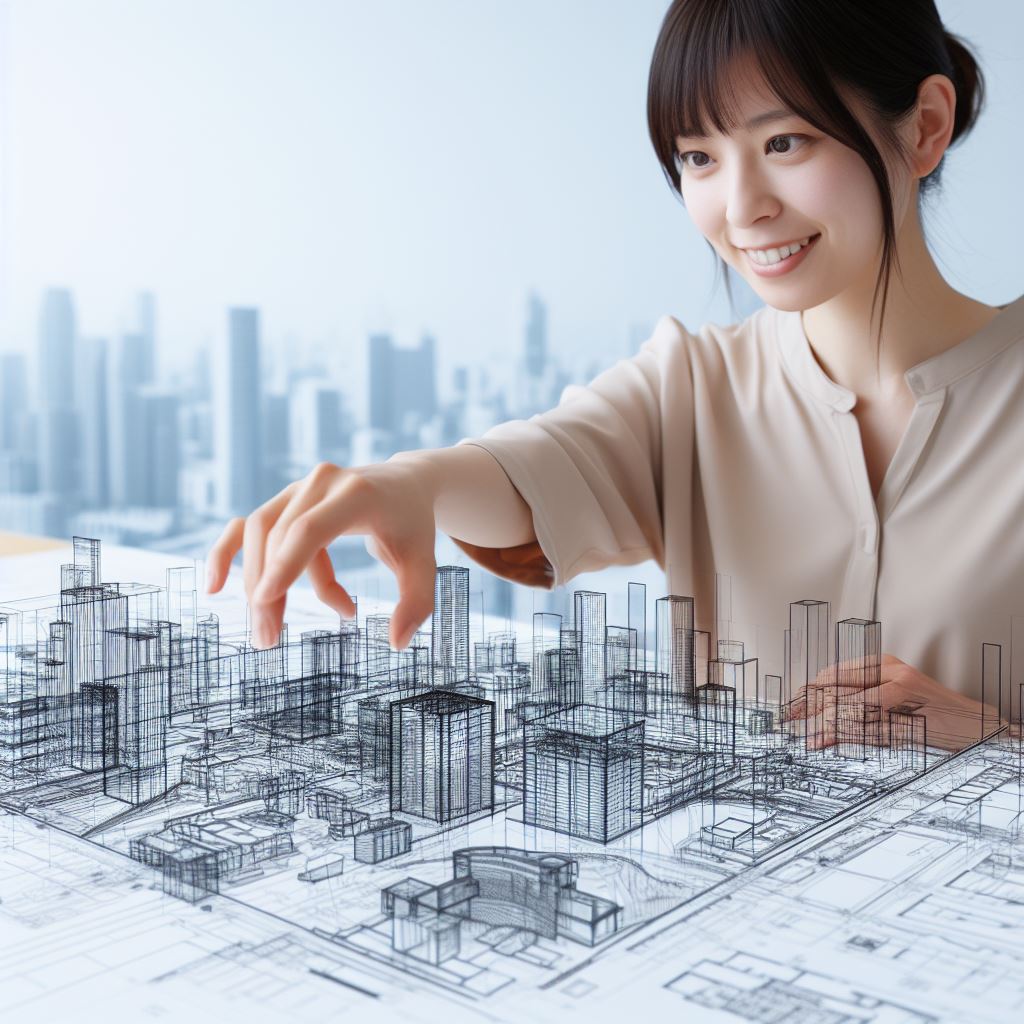Introduction
In the realm of UK architecture, marrying aesthetics and function is paramount.
Striking the perfect harmony between visual appeal and practicality defines architectural success.
A balance ensures structures aren’t just visually pleasing but also serve their intended purposes efficiently.
This delicate equilibrium in design philosophy profoundly impacts how spaces are experienced and utilized.
Achieving this equilibrium demands a deep understanding of the interplay between aesthetics and functionality.
In the UK, where architectural heritage meets modern innovation, this balance remains a pivotal aspect.
It’s not merely about creating visually striking edifices; it’s about ensuring these structures cater to human needs effectively.
Aesthetic allure can captivate, but if a building fails to function effectively, its allure diminishes.
Conversely, a highly functional yet aesthetically lacking structure might undermine its own purpose.
Understanding this symbiotic relationship between form and function drives innovation in UK architecture.
The journey of discovering this equilibrium within architectural design continues to shape the UK’s urban landscapes.
Aesthetics in UK Buildings
When it comes to UK buildings, aesthetics play a crucial role in their overall design and functionality.
Aesthetics not only enhance the visual appeal of a building but also contribute to its purpose and the experience of its occupants.
The significance of aesthetics in UK buildings can be seen in their historical and cultural context.
The country has a rich architectural heritage, with iconic landmarks that serve as symbols of its identity and history.
From medieval castles to Victorian-era buildings, aesthetics have been a key consideration in their design, reflecting the prevailing architectural styles and trends of their time.
Throughout its history, the UK has seen various architectural styles and trends emerge.
One such style is the Gothic architecture, which reached its peak during the medieval period.
Exemplified by soaring cathedrals and grand castles, Gothic buildings often feature pointed arches, ribbed vaults, and intricate decorative elements.
Their aesthetics evoke a sense of grandeur and spirituality.
In the 18th and 19th centuries, the Neoclassical style gained popularity in the UK.
Inspired by ancient Greek and Roman architecture, Neoclassical buildings can be seen in famous landmarks such as the British Museum and Buckingham Palace.
These buildings often feature symmetrical facades, columns, and pediments, exuding a sense of elegance and timelessness.
Moving into the 20th century, the UK witnessed the rise of modernist architecture.
Influenced by the ideas of functionalism and the use of new materials such as steel and glass, modernist buildings embraced simplicity and clean lines.
The iconic Barbican Centre in London is an example of a modernist building, characterized by its brutalist design and geometrical forms.
In recent years, sustainability and eco-friendliness have become important considerations in UK building design.
Many architects now incorporate green features and materials into their designs, creating aesthetically pleasing buildings that are environmentally responsible.
The Eden Project in Cornwall is a prime example of such a building, with its iconic biomes and sustainable construction methods.
When it comes to aesthetically pleasing buildings in the UK, the list is vast and varied. St. Paul’s Cathedral in London, with its majestic dome and intricate carvings, is a testament to the country’s architectural prowess.
The Scottish Parliament Building in Edinburgh, with its striking modern design, harmoniously blends into its historical surroundings.
The Gherkin, an iconic skyscraper in London, showcases contemporary architecture with its distinctive curving glass facade.
The Shard, another impressive London landmark, is a triumph of modern design, dominating the city’s skyline with its sleek and angular structure.
In fact, aesthetics play a crucial role in UK buildings, defining their visual appeal, functionality, and cultural significance.
From historical landmarks to contemporary structures, the country’s architecture reflects a wide range of styles and trends.
By incorporating aesthetics into their designs, architects not only create visually pleasing buildings but also contribute to the identity and heritage of the UK’s built environment.
Read: Day in the Life of a UK CAD Technician
Functionality in UK Buildings
The functionality of buildings plays a crucial role in the design and construction process in the UK.
Importance of Functionality in UK Buildings
Functional buildings are not only aesthetically pleasing, but they also serve a purpose.
Functionality ensures that a building can adequately fulfill its intended function, whether it is a residential, commercial, or public structure.
- Economic Importance: Functional buildings contribute to the economic growth of the UK. They attract businesses and investments, creating job opportunities and boosting local economies.
- User Satisfaction: When a building is functional, it enhances the experience of those who interact with it. It provides comfort, convenience, and ease of use, resulting in higher user satisfaction.
- Safety and Security: Functional design prioritizes safety and security measures, ensuring that occupants are protected from potential hazards. This includes the implementation of fire safety systems, proper lighting, and accessible emergency exits.
- Efficient Space Utilization: Functional buildings maximize the use of available space. By carefully planning layouts and incorporating efficient storage solutions, buildings can accommodate various activities and optimize their usability.
Enhancing Usability through Functionality
Functional design enhances the usability of a building, making it more practical and user-friendly.
- Ergonomics: Functional buildings prioritize ergonomics, ensuring that spaces are designed with the comfort and efficiency of human interaction in mind.
This includes factors such as proper seating, height-adjustable workstations, and accessible facilities for people with disabilities. - Flow and Circulation: Functional buildings incorporate efficient circulation patterns and easy navigation.
They consider the movement of people within the building, ensuring smooth transitions between spaces and reducing congestion. - Adaptability: Functional buildings are designed with adaptability in mind.
They can easily accommodate changes in occupancy, technological advancements, and evolving needs.
This flexibility extends the lifespan and usefulness of the building.
Renowned Examples of Functional Design in UK Buildings
Several buildings in the UK are celebrated for their functional design:
Personalized UK Career Consulting
Receive tailored career guidance designed just for you. Get actionable steps and expert support to boost your career in 1-3 days. Take control of your career now.
Get Started- The Shard, London: This iconic skyscraper exemplifies functionality with its mixed-use design, incorporating office spaces, a hotel, residential apartments, and observation decks.
- The Lowry, Salford: This arts and entertainment complex features functional design by including multiple performance spaces, art galleries, restaurants, and conference facilities.
- Heathrow Terminal 5, London: This airport terminal showcases functional design with its efficient flow management, intuitive wayfinding, and advanced luggage handling systems.
- Bullitt Hotel, Belfast: This boutique hotel embraces functionality with its innovative room layouts, adaptable furniture, and technology integration for a seamless guest experience.
- Manchester Civil Justice Centre, Manchester: This courthouse is known for its functional design, incorporating open plan courtrooms, natural light, and accessible amenities for all users.
In short, functionality is of paramount importance in UK buildings. It not only ensures efficient use of space but also enhances the overall experience of occupants.
By prioritizing functionality in design and construction, the UK continues to produce innovative and user-friendly buildings that contribute to economic growth and urban development.
Read: CAD Technician Career Path in the UK
Challenges of Balancing Aesthetics and Function
In the world of architecture, the delicate balance between aesthetics and function is a constant challenge that architects face.
While striving to create visually stunning buildings, they must also ensure that the spaces they design meet the practical needs of their users.
Exploring the Challenges Architects Face
- Architects must find innovative solutions to balance the desire for beauty with the need for functionality.
- One challenge is the clash between the artistic vision of the architect and the practical requirements of the building.
- Creating a harmonious union between form and function requires careful consideration of every design element.
- Architects often face the challenge of finding creative ways to incorporate functionality into their designs without compromising aesthetics.
Limitations in Budget and Space
- Tight budget constraints can greatly impact the ability to achieve both aesthetic and functional goals.
- Architects must work within the financial limitations to create designs that fulfill the needs of the project.
- Space limitations can also pose challenges, forcing architects to be strategic in their design choices.
- Efficiency becomes crucial in maximizing the functionality of a limited space, without sacrificing aesthetics.
The Need for Collaborative Efforts
- Collaboration between architects, engineers, and stakeholders is vital in achieving the perfect balance between aesthetics and function.
- Engineers play a crucial role in translating the aesthetic vision into functional reality.
- They ensure that the structure meets safety standards and adheres to building codes.
- Stakeholders, such as clients and end-users, also provide valuable input and help align the project’s objectives.
- By working together, architects, engineers, and stakeholders can find innovative solutions to overcome any challenges that arise.
In essence, balancing aesthetics and function in UK buildings presents architects with numerous challenges.
These challenges include finding creative solutions, working within budget and space limitations, and fostering collaborative efforts.
Despite these obstacles, architects strive to create buildings that are not only visually appealing but also functional and practical for their users.
Read: Top CAD Software Used by UK Professionals

Successful Examples of Balancing Aesthetics and Function
When it comes to architecture, achieving a balance between aesthetics and function is of utmost importance.
In the United Kingdom, there are several buildings that have successfully accomplished this delicate balance, becoming notable case studies.
One Canada Square, London
One Canada Square, located in Canary Wharf, London, is a prime example of how aesthetics and function can be perfectly balanced.
Its iconic design, featuring a sleek glass facade, creates a visually stunning landmark in the city’s skyline.
At the same time, the building’s layout and infrastructure cater to the needs of its occupants, providing spacious and efficient workspaces.
The architectural features of One Canada Square, such as its triangular shape and impressive height, contribute to its success.
The building’s unique design not only enhances its visual appeal but also optimizes natural light and reduces wind resistance.
Additionally, the flexible interior layout allows for various uses, accommodating different businesses and organizations.
Furthermore, the positive impact of One Canada Square extends beyond its occupants.
As an iconic symbol of London’s modernity, the building attracts tourists and serves as a catalyst for economic growth in the surrounding community.
It has become a representation of the city’s success in balancing aesthetics and function.
Birmingham Library, Birmingham
The Birmingham Library is another remarkable example of how aesthetics and function can harmoniously coexist in a building.
Its stunning design, characterized by a unique circular exterior and intricate metalwork, makes it a visual masterpiece in the heart of Birmingham.
The architectural elements of the library play a crucial role in its success.
The circular shape, for instance, allows for efficient space utilization and enhances the flow of visitors throughout the building.
Additionally, the metalwork provides a distinctive aesthetic while also serving as a sunshade, regulating natural light and maintaining a comfortable interior temperature.
The positive impact of the Birmingham Library goes beyond its architectural achievements.
As a cultural hub, it attracts visitors from near and far, offering a wide range of services and resources.
The building has become a symbol of pride for the community, fostering a sense of unity and promoting education.
The Eden Project, Cornwall
Showcasing a perfect blend of aesthetics and function, the Eden Project in Cornwall has become a global icon of sustainable architecture.
Its unique biome domes, made of hexagonal panels and ETFE cushions, provide visually striking spaces for an immersive botanical experience.
The architectural features of the Eden Project contribute significantly to its success.
The innovative use of materials, such as the lightweight ETFE cushions, allows for optimal natural light penetration while providing insulation.
Additionally, the hexagonal paneling maximizes surface area, enabling efficient plant cultivation and showcasing biodiversity.
Your Dream Job Starts with a Perfect CV
Get a tailored CV and cover letter that captures your unique strengths and stands out in your industry. Let us help you make an unforgettable first impression.
Get StartedBeyond its stunning design, the Eden Project has a profound positive impact on its visitors and the local community.
It serves as an educational platform, raising awareness about sustainability and inspiring individuals to make a positive environmental impact.
Moreover, it has become a major tourist attraction, contributing to the economic growth of Cornwall.
The successful examples of One Canada Square, Birmingham Library, and the Eden Project demonstrate that achieving a balance between aesthetics and function is not only possible but also highly beneficial.
These buildings not only stand as architectural achievements but also positively impact their occupants and surrounding communities.
Read: Famous UK Architects and Their Signature Works
The Role of Sustainable Design
In recent years, there has been a growing importance placed on sustainable design in UK buildings.
Sustainable design not only focuses on reducing the negative impact on the environment, but it also plays a crucial role in enhancing both the aesthetics and functionality of buildings.
The Growing Importance of Sustainable Design
The awareness of the need for sustainable design has been increasing rapidly in the UK.
With the growing concerns over climate change and the depletion of natural resources, architects and designers are now recognizing the significance of incorporating sustainability in their projects.
Sustainable design has become a key consideration in the construction industry, as it helps minimize the environmental impact of buildings.
It encompasses various aspects such as energy efficiency, water conservation, and the use of eco-friendly materials.
Enhancing Aesthetics and Functionality
Contrary to the misconception that sustainable design compromises aesthetics, it can actually enhance the visual appeal of UK buildings.
Architects are now embracing innovative and creative approaches to incorporate sustainable elements seamlessly into their designs.
One example of how sustainable design can enhance aesthetics is through the use of green roofs or living walls.
These features not only provide insulation and improve air quality but also add a touch of natural beauty to the building’s exterior.
Moreover, sustainable design goes hand in hand with functionality.
By integrating energy-efficient systems and materials, buildings can operate more efficiently and reduce energy consumption.
This not only benefits the environment but also lowers utility costs for occupants.
Examples of Balanced Sustainable Buildings in the UK
There are several notable examples of sustainable buildings in the UK that have successfully achieved a balance between aesthetics and functionality.
One such example is the Bullitt Center in Seattle.
This innovative building has achieved net-zero energy consumption and incorporates natural ventilation, renewable energy sources, and rainwater harvesting.
Despite its sustainable features, the Bullitt Center is visually appealing with its modern design and sleek aesthetics.
Another remarkable sustainable building in the UK is the BedZED development in London.
This mixed-use community showcases various sustainable features, including passive solar design, on-site renewable energy generation, and an extensive recycling system.
The development’s distinctive aesthetic with its colorful facades adds vibrancy to the local neighborhood while promoting sustainable living.
In general, sustainable design plays a vital role in UK buildings today.
It not only addresses environmental concerns but also enhances both the aesthetics and functionality of buildings.
With the increasing importance placed on sustainability, architects and designers are continuously pushing the boundaries to achieve a perfect balance between aesthetics and function in their projects.
The examples mentioned above are a testament to the successful integration of sustainable design principles in the UK’s built environment.
Learn More: Career Paths for UK Mech Engineers
Optimize Your LinkedIn for Success
Boost your LinkedIn profile with a professional bio, keyword-rich headline, and strategic recommendations that attract recruiters. Stand out from the crowd and get noticed.
Optimize NowConclusion
It is crucial to recognize the significance of balancing aesthetics and function in UK buildings.
This delicate equilibrium ensures that buildings not only look visually appealing but also serve their intended purpose effectively.
Architectural design should continue to foster collaboration and innovation to meet the evolving needs of the modern world.
By pushing boundaries and thinking outside the box, architects can create remarkable structures that capture both beauty and practicality.
We should cultivate an appreciation for buildings that successfully strike a balance between aesthetics and function.
By supporting and celebrating these architectural achievements, we contribute to the advancement of the built environment and enhance our quality of life.
[E-Book for Sale]
500 Cutting-Edge Tech Startup Ideas for 2024 & 2025: Innovate, Create, Dominate
$19.99 • 500 Tech Startup Ideas • 62 pages
You will get inspired with 500 innovative tech startup ideas for 2024 and 2025, complete with concise descriptions to help you kickstart your entrepreneurial journey in AI, Blockchain, IoT, Fintech, and AR/VR.




